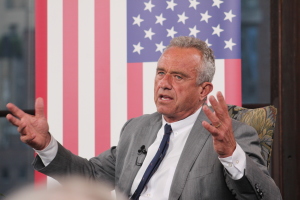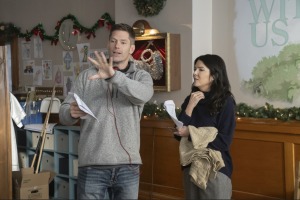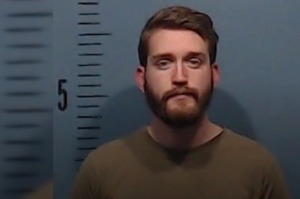Katrina-Hit Churches Face Tough Times
Like the thousands of families washed from their homes and businesses along Mississippi's coast, church leaders from Waveland to Pascagoula face hard decisions about the future.
BAY ST. LOUIS, Miss. (AP) – The Rev. Edward Murphy wakes each day at 5 a.m., has Bible study, and within an hour is on the reconstruction site of hurricane-battered Shoreline Baptist Church.
The stocky, 61-year-old minister leaves footprints in the sawdust on the sanctuary floor as he makes his daily inspection of the two-story, brick building. When he reaches the outside rear of the church, he abruptly stops, smiles and turns to his wife, Karen.
"They have the meter in," he says.
"Praise the Lord," Karen Murphy replies.
The significance of the meter is more than restored electricity. It means the church is that much closer to recovery and to becoming a symbol of hope to a community still scarred eight months after Hurricane Katrina nearly wiped it off the map.
"Virtually everybody who comes into Bay St. Louis comes by this church," Pastor Murphy says. "I want it to be a shining light,"
Like the thousands of families washed from their homes and businesses along Mississippi's coast, church leaders from Waveland to Pascagoula face hard decisions about the future.
Some are rebuilding with the help of the faithful across the nation, while others have nothing left to rebuild and are relocating inland. A common thread for all is the challenge to provide healing for struggling churchgoers.
"We need to get these houses of worship in order as soon as possible before more people drift away," says William Perkins, editor of the Baptist Record, the Mississippi Baptist Convention's weekly news journal.
Between 300 and 400 Southern Baptist churches were damaged by the hurricane. Of those, about 100 were destroyed, Perkins says.
Restoration is made possible from insurance settlements, donations and volunteer labor. Many churches get financial assistance from their headquarters. Few seek federal disaster loans.
In most cases, however, insurance payments are far short of what's needed.
The Roman Catholic Diocese of Biloxi had its parishes, schools, deaf center and senior citizens apartments insured for $35 million on one policy, but Katrina did $70 million in damage.
Ten churches were destroyed or gutted and another 10 were severely damaged, said Shirley Henderson, communication coordinator for the diocese. The diocese combined some churches rather than rebuild, basing the decision on the degree of damage and whether there was a congregation base left in a parish.
"We lost so many people, so you're not going to have the collection," Henderson said.
Even as Gulf Coast churches grapple with structural and financial dilemmas, they're still expected to serve a crippled community.
Murphy's church, whose congregation numbered 150 before the storm, had $750,000 in damage. He's received a fraction of that in volunteer labor and monetary contributions. Yet, even as he waits for more donations, he's using church funds and other resources to build hundreds of storage sheds for residents living in trailers provided by the federal government.
He and his band of volunteers also have cleaned up the flooded homes of 1,500 families in the months since Katrina raged ashore last August.
About 30 miles east of Bay St. Louis, a few hundred feet from Gulfport's beach, is a slab of concrete that once was home to St. Marks Episcopal Church.
Leaders of the historic church, founded in 1846 and frequented by Confederate President Jefferson Davis, say they're going to rebuild inland rather than risk another deadly storm.
For now, members meet in a 78-by-40-foot federal trailer each Sunday. They sit on straight-back chairs tightly arranged in a semicircle around a makeshift pulpit: a table covered with purple linen with a brass cross on top. The compact surroundings are conducive to "reaching out to members," says the Rev. Nick Roberts, an associate pastor who also is coast coordinator for the Lutheran-Episcopal Disaster Response.
St. Marks' Katrina-related ministries include counseling, distributing food and clothing and recruiting doctors and nurses to the Coastal Family Health Clinic.
"The church has always been the provider of last resort," Roberts said. "Even as we pick our mission to rebuild houses and disaster response programs, what we understand is there's still going to be those people who can't afford utilities and can't afford medicine. They're going to come back to the churches."
The Rev. Beau Roberts, pastor of St. Marks who is not related to Nick Roberts, says the church has raised two-thirds of the money needed for the new building project.
Beau Roberts, who was a member of St. Marks when Hurricane Camille blew across the Gulf Coast in 1969, says new building codes adopted after Katrina and the rising cost of insurance forced the church's move two miles inland.
Designs for the new building, expected to be completed next year, include housing space for volunteers who may find themselves on the Gulf Coast in the future.
"We've all lived here long enough to know the next disaster is coming," he says.
Copyright © 2006 The Associated Press. All rights reserved. The information contained in the AP News report may not be published, broadcast, rewritten or redistributed without the prior written authority of The Associated Press.




























